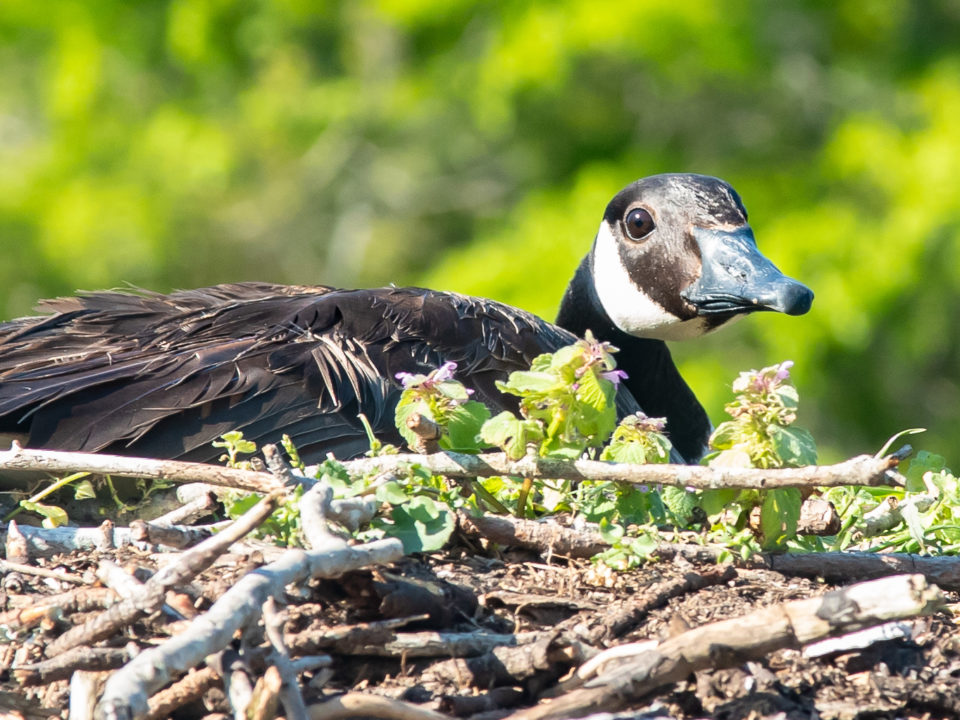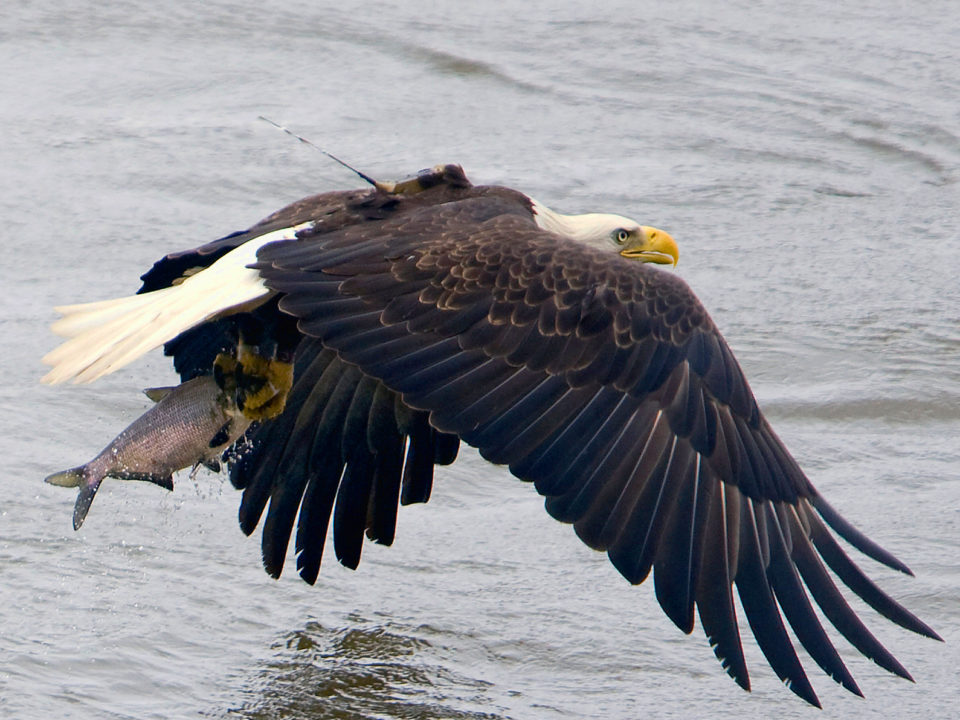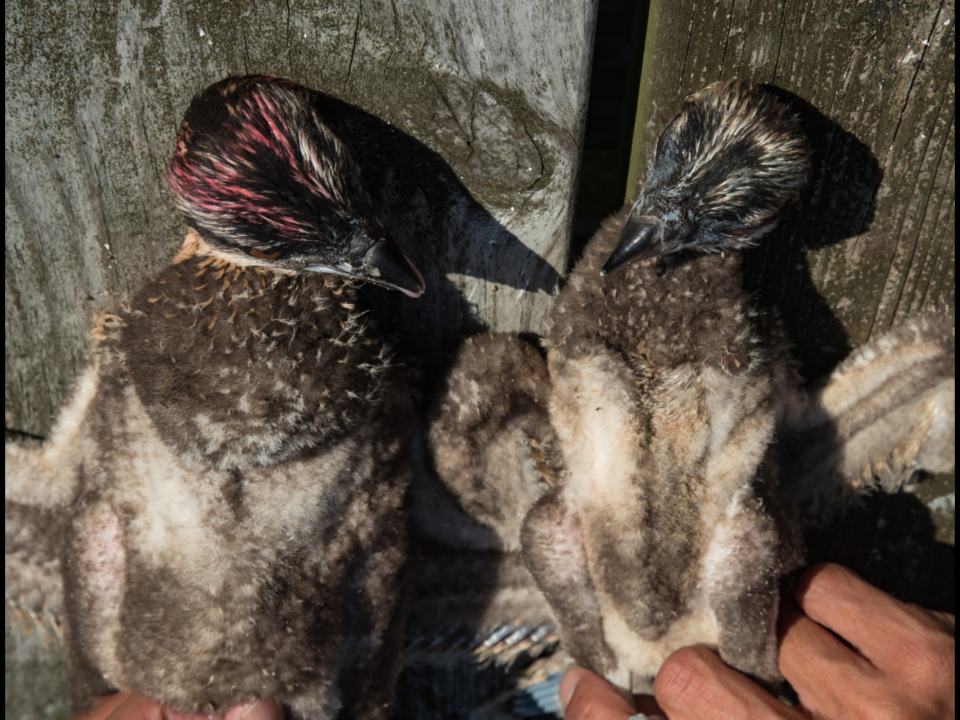Golden eagle tracked to Northern summering area
CCB delineates Globally Important Bird Areas
June 11, 2008Peregrine Falcon population continues to hold ground in Virginia
June 13, 2008
Written by Bryan Watts & Elizabeth Mojica
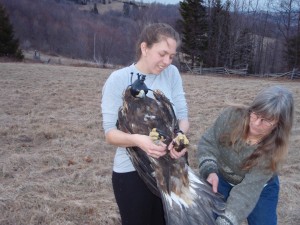
Libby Mojica holds the golden eagle as Patti Reum examines its tail plumage to determine the age of the bird. Photo by Fletcher Smith.
In the early spring of 2008, CCB biologists traveled to Highland County Virginia to trap a golden eagle and deploy a tracking device. The successful deployment on subadult eagle, later named Virgil Caine, was the culmination of a partnership between CCB, the Virginia Society of Ornithology, and a grass roots effort by local citizens to learn more about golden eagles in the southern Appalachians. For more than a century controversy has waxed and waned over the breeding status of golden eagles in this part of the country. Observations of birds during the breeding season and old accounts of possible nesting sites have lacked definitive evidence. The recent rise in the number of goldens during the winter along with the documentation of adult-plumaged birds during the breeding season has rekindled interest in this unresolved question. Pressure from the wind-power industry to establish wind farms within some areas used by the population has also heightened concern for the species in the region.
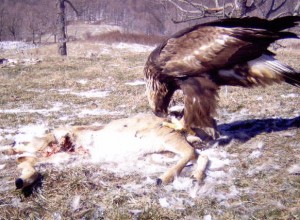
Golden eagle feasts on a deer carcass in a snowy field in Highland County, VA. Photo by Sandy Hevener.
In 2006, a network of citizens in Highland County Virginia began to survey eagles within their county and document observations. This initial effort lead to a fundraiser to purchase the technology required to track a bird to learn more about its local activities and broader movements beyond the county.
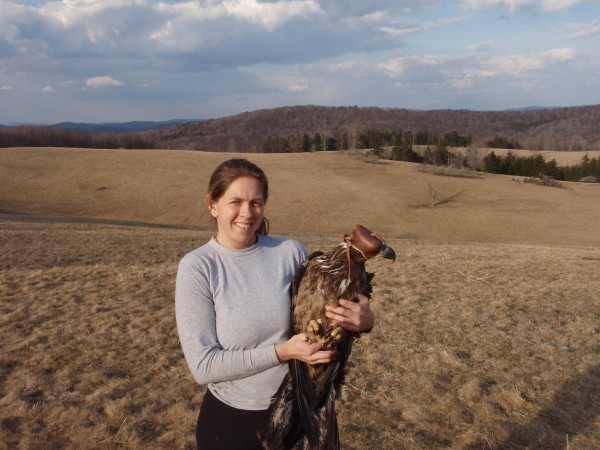
Raptor biologist, Libby Mojica, holds the bald eagle caught in Highland County, VA. Photo by Fletcher Smith.
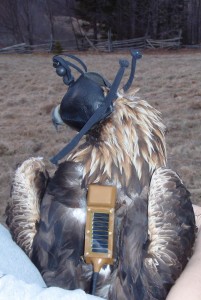
The golden eagle subadult outfitted with a light-weight satellite-transmitter. Photo by Fletcher Smith.
The golden eagle was trapped along with a subadult bald eagle on March 13 using a rocket net baited with a deer carcass. The eagle stayed in the mountains of Virginia until April 4th when it initiated northward migration. The migration path followed the Appalachian Mountains through West Virginia all the way northeast to the Canadian coast in New Brunswick. After approximately 4 weeks of travel, the eagle settled in the mountains of northern Maine for most of May and June. In late June, she moved into Quebec south of the St Lawrence River.
Related posts
A brood of osprey in Mobjack Bay showing a well-fed chick (left) and an emaciated chick (right). The chick on the right would die the following week due to starvation. Work in Mobjack Bay over a 40+ year period has shown that both reproductive rates and food delivery rates have declined dramatically. The decline in provisioning has led to an increase in brood reduction or chick loss due to starvation. Photo by Bryan Watts.

